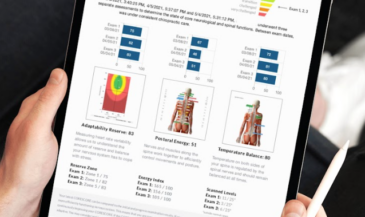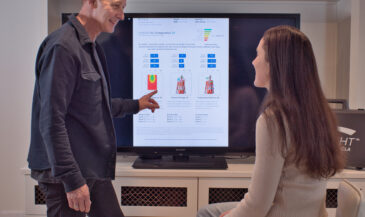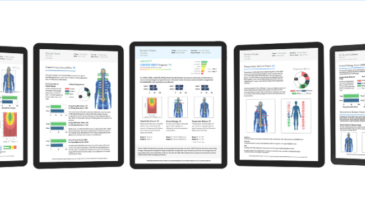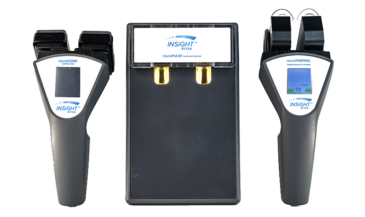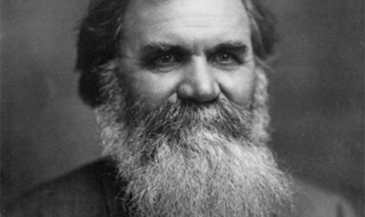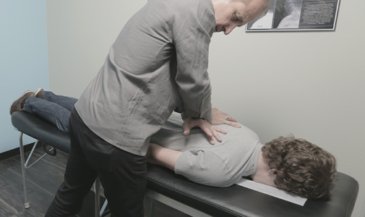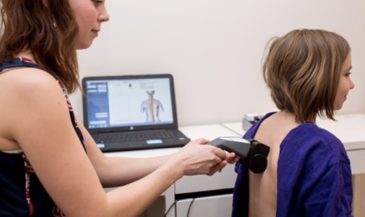By Dr. Christopher Kent
I was recently surprised by an exchange of online posts on a chiropractic newsgroup. A heated debate was underway concerning the issue of the asymptomatic subluxation.
One of the participants was a chiropractic radiologist who stated that he did not “believe” in the asymptomatic subluxation. His choice of terms shocked me, since the existence of subluxation is a clinical issue, not a matter of faith or belief. My first thought was to suggest that he consider joining the Flat Earth Society — group of folks who “believe” that the world is flat, despite overwhelming evidence to the contrary.
In previous columns, I have addressed neurobiological mechanisms associated with vertebral subluxation which involve processes other than nociception and pain perception. These include: nerve root compression [1]; dysafferentation [2]; autonomic changes [3]; and dysponesis [4]. Furthermore, comprehensive reviews of these and other mechanisms have been published in peer-reviewed journals [5,6].
Hause reported that compressed nerve roots can exist without causing pain and described a mechanism of progression where mechanical changes lead to circulatory changes, and where inflammatogenic agents may result in chemical radiculitis.
This may be followed by disturbed CSF flow, defective fibrinolysis and resulting cellular changes. The influence of the sympathetic system may result in synaptic sensitization of the CNS and peripheral nerves, creating a “vicious circle” resulting in radicular pain. [7]
The importance of asymptomatic lesions was reported by Wilberger and Pang who followed 108 asymptomatic patients with radiological evidence of herniated discs. They reported that within three years, 64% of these patients developed symptoms of lumbosacral radiculopathy. [8]
Whatmore and Kohi described an important neurophysiologic factor in functional disorders which they termed “dysponesis.”
Dysponesis refers to a reversible physiopathologic state consisting of errors in energy expenditure, which are capable of producing functional disorders. Dysponesis consists mainly of covert errors in action potential output from the motor and premotor areas of the cortex and the consequences of that output.
These neurophysiological reactions may result from responses to environmental events, bodily sensations, and emotions. The resulting aberrant muscle activity may be evaluated using surface electrode techniques. [9]
It is obvious that vertebral subluxation, like breast cancer and hypertension, may be asymptomatic. It is the responsibility of the chiropractor to detect and correct vertebral subluxations, based upon objective criteria, whether symptomatic or not. Those who refuse to accept the responsibility to assess subluxation do so at their peril, and the peril of their patients.
Their delusions are a public health menace.
References
1. Kent C: “Nerve compression physiology.” The Chiropractic Journal, (December 1995).
2. Kent C: “Dysafferentation & VS.” The Chiropractic Journal. (June 1996).
3. Kent C: “Beyond bad backs.” The Chiropractic Journal. (September 1995).
4. Kent C, Gentempo P: “Dysponesis: chiropractic in a word.” The Chiropractic Journal. (September 1994).
5. Kent C: “Models of vertebral subluxation: a review.” Journal of Vertebral Subluxation Research. Vol. 1, No. 1 (August 1966)
6. Dishman R: “Review of the literature supporting a scientific basis for the chiropractic subluxation complex.” J Manipulative Physiol Ther 8(3):163, (1985).
7. Hause M: “Pain and the nerve root.” Spine 18(14):2053, (1993).
8. Wilberger JE Jr, Pang D: “Syndrome of the incidental herniated lumbar disc.” J Neurosurg 59(1):137, (1983)
9. Whatmore GB, Kohi DR: “Dysponesis: a neurophysiologic factor in functional disorders.” Behav Sci 13(2):102, (1968)
(Dr. Christopher Kent, president of the Council on Chiropractic Practice, is a 1973 graduate of Palmer College of Chiropractic. Named “Chiropractic Researcher of the Year” in 1991 by the ICA and in 1994 by the WCA, Dr. Kent is director of research for EMG Consultants, Inc., and co-founder of Paradigm Partners, Inc. With Dr. Patrick Gentempo, Jr., Dr. Kent produces a monthly audio tape journal, “On Purpose,” covering current events in science, philosophy, and politics of vital interest to the practicing chiropractor. For subscription information call 1-800-892-6463.)






